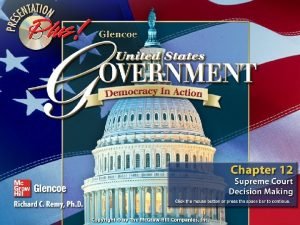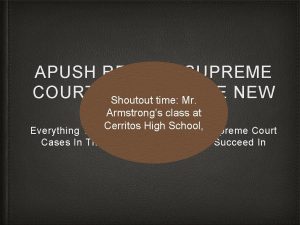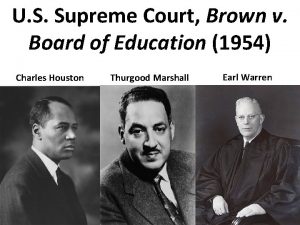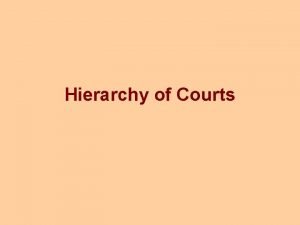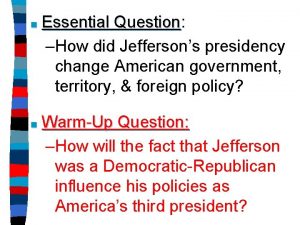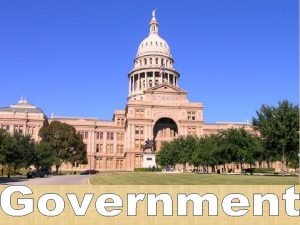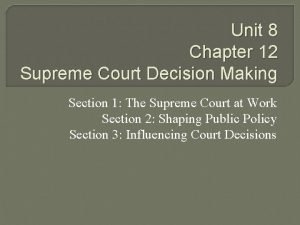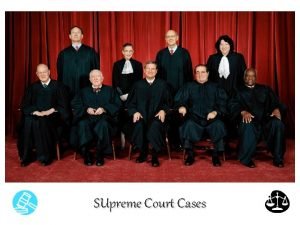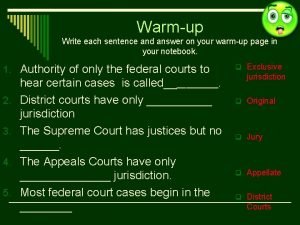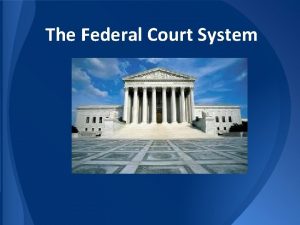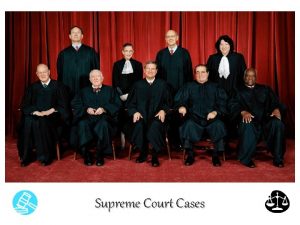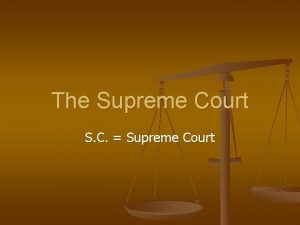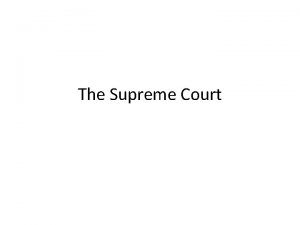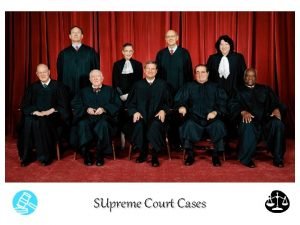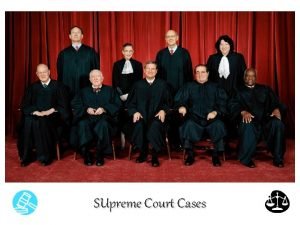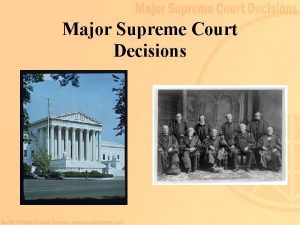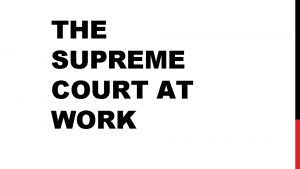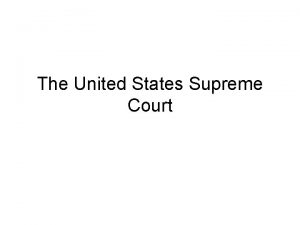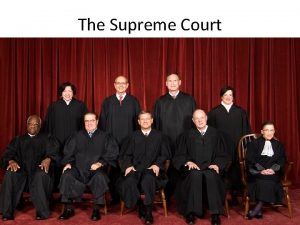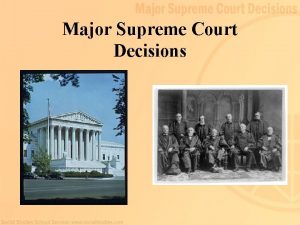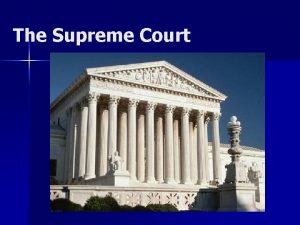The Supreme Court In Action The Supreme Court















- Slides: 15

The Supreme Court In Action

The Supreme Court In Action � Federal govt. is party to almost half the cases � Solicitor ◦ ◦ general frequently appears before S. C. Federal govt. ’s top trial lawyer 3 rd in command at Justice Dept. Decides what cases govt. will appeal from lower courts Approves every case presented to S. C. � Justices may consider other opinions ◦ Amicus curiae (“friend of the court”) briefs submitted if both parties agree or S. C. grants permission ◦ Law journals, especially Harvard and Yale’s

Conference Procedures � Chief Justice: speaks first, votes last � Selection of opinion writer by senior judge on winning side � Kinds of Court Opinion: ◦ Per curiam: brief and unsigned ◦ Majority, concurring, and dissenting ◦ About 40% of opinions are unanimous

The United States Supreme Court


Chief Justice John Roberts Assumed office : September 29, 2005 Nominated by George W. Bush Preceded by William Rehnquist

Associate Justices Antonin Scalia Assumed office: September 26, 1986 Nominated by Ronald Reagan Anthony Kennedy Assumed office: February 18, 1988 Nominated by Ronald Reagan

Associate Justices Clarence Thomas Assumed office: October 23, 1991 Nominated by George H. W. Bush Ruth Bader Ginsburg Assumed office: August 10, 1993 Nominated by Bill Clinton

Associate Justices Stephen Breyer Assumed office: August 3, 1994 Nominated by Bill Clinton Samuel Alito Assumed office: January 31, 2006 Nominated by George W. Bush

Associate Justices Sonia Sotomayor Assumed office: August 8, 2009 Nominated by Barack Obama Elena Kagan Assumed office: August 7, 2010 Nominated by Barack Obama


The Power of the Federal Courts � Measures of Power ◦ # of laws declared unconstitutional (over 160) ◦ # of prior cases overturned (over 260) Not following stare decisis (allowing precedent to control current case) ◦ Extent to which judges will handle “political questions” Cases once left to legis. and exec. branches ◦ Kinds of remedies imposed A judicial order enforcing a right or correcting a wrong More sweeping orders now that affect large groups

The Power of the Federal Courts � Supporters of Judicial Activism ◦ Courts should correct injustices when other branches or state govts. refuse ◦ Courts are last resort for people without power or influence to gain new laws � Critics of Judicial Activism ◦ Judges lack expertise in designing and managing complex institutions ◦ Requires balancing policy priorities and allocating public revenues ◦ Courts aren’t accountable because judges aren’t elected

The Power of the Federal Courts � Why is there more activism today? ◦ Adversary culture that emphasizes individual rights ◦ People are suspicious of govt. power ◦ Easier to get standing in court

Why Are The Courts So Involved In Legislation? � Laws and Constitution have vague language � Laws induce court challenges ◦ Gives courts chances to design remedies ◦ Govt. increasingly on the defensive in court cases � Attitudes of federal judges ◦ Affects their decisions because law gives them wide freedom
 Is there a basketball court above the supreme court
Is there a basketball court above the supreme court Supreme court does
Supreme court does Important court cases apush
Important court cases apush What do these headlines say about how the supreme court
What do these headlines say about how the supreme court Supreme court
Supreme court Jurisdiction of high court
Jurisdiction of high court John marshall supreme court
John marshall supreme court Have supreme court
Have supreme court Vocabulary activity 12 supreme court decision making
Vocabulary activity 12 supreme court decision making Insular cases apush
Insular cases apush The u.s. supreme court works chiefly as a(n)
The u.s. supreme court works chiefly as a(n) How cases reach the supreme court worksheet answers
How cases reach the supreme court worksheet answers Victorian court hierarchy
Victorian court hierarchy Supreme court justice system
Supreme court justice system Which of these best summarizes the monroe doctrine?
Which of these best summarizes the monroe doctrine? Supreme court cases graphic organizer answers
Supreme court cases graphic organizer answers

